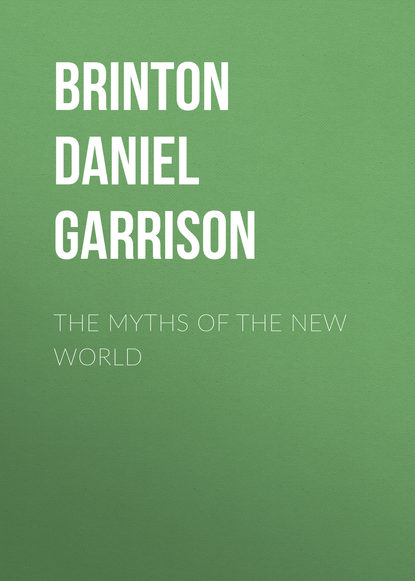По всем вопросам обращайтесь на: info@litportal.ru
(©) 2003-2024.
✖
The Myths of the New World
Настройки чтения
Размер шрифта
Высота строк
Поля
Ni Verdener yeg husker,
Og ni Himle,
says the Voluspa (i. 2, in Klee, Le Deluge, p. 220). I observe some English writers have supposed from these lines that the Northmen believed in the existence of nine abodes for the blessed. Such is not the sense of the original.
329
At least this is the doctrine of one of the Shastas. The race, it teaches, has been destroyed four times; first by water, secondly by winds, thirdly the earth swallowed them, and lastly fire consumed them (Sepp., Heidenthum und Christenthum, i. p. 191).
330
Echevarria y Veitia, Hist. de la Nueva España, lib. i. cap. 4, in Waitz.
331
Brasseur, Hist. du Mexique, iii. p. 495.
332
The contrary has indeed been inferred from such expressions of the writer of the book of Ecclesiastes as, “that which hath been, is now, and that which is to be, hath already been” (chap. iii. 15), and the like, but they are susceptible of an application entirely subjective.
333
Voluspa, xiv. 51, in Klee, Le Deluge.
334
Natur. Quæstiones, iii. cap. 27.
335
Velasco, Hist. du Royaume du Quito, p. 105; Navarrete, Viages, iii. p. 444.
336
Rel. de la Nouv. France, An 1637, p. 54; Schoolcraft, Ind. Tribes, i. p. 319, iv. p. 420.
337
Schoolcraft, ibid., iv. p. 240.
338
Cogolludo, Hist. de Yucathan, lib. iv. cap. 7.
339
The Spanish of Lizana is—
“En la ultima edad, segun esta determinado,
Avra fin el culto de dioses vanos;
Y el mundo sera purificado con fuego.
El que esto viere sera llamado dichoso
Si con dolor lloraré sus pecados.”
(Hist. de Nuestra Señora de Itzamal, in Brasseur, Hist. du Mexique, ii. p. 603). I have attempted to obtain a more literal rendering from the original Maya, but have not been successful.
340
Vocabulario Quiche, s. v., ed. Brasseur, Paris, 1862.
341
The Eskimo innuk, man, means also a possessor or owner; the yelk of an egg; and the pus of an abscess (Egede, Nachrichten von Grönland, p. 106). From it is derived innuwok, to live, life. Probably innuk also means the semen masculinum, and in its identification with pus, may not there be the solution of that strange riddle which in so many myths of the West Indies and Central America makes the first of men to be “the purulent one?” (See ante, p. 135.)
342
Müller, Amer. Urrelig., pp. 109, 229.
343
D’Orbigny, Frag. d’une Voy. dans l’Amér. Mérid., p. 512. It is still a mooted point whence Shakspeare drew the plot of The Tempest. The coincidence mentioned in the text between some parts of it and South American mythology does not stand alone. Caliban, the savage and brutish native of the island, is undoubtedly the word Carib, often spelt Caribani, and Calibani in older writers; and his “dam’s god Setebos” was the supreme divinity of the Patagonians when first visited by Magellan. (Pigafetta, Viaggio intorno al Globo, Germ. Trans.: Gotha, 1801, p. 247.)
344
Both Lederer and John Bartram assign it this meaning. Gallatin gives in the Powhatan dialect the word for mountain as pomottinke, doubtless another form of the same.
345
Marcy, Exploration of the Red River, p. 69.
346
Compare Romans, Hist. of Florida, pp. 58, 71; Adair, Hist. of the North Am. Indians, p. 195; and Gregg, Commerce of the Prairies, ii. p. 235. The description of the mound is by Major Heart, in the Trans. of the Am. Philos. Soc., iii. p. 216. (1st series.)
347
The French writers give for Great Spirit coyocopchill; Gallatin for hill, kweya koopsel. The blending of these two ideas, at first sight so remote, is easily enough explained when we remember that on “the hill of heaven” in all religions is placed the throne of the mightiest of existences. The Natchez word can be analyzed as follows: sel, sil, or chill, great; cop, a termination very frequent in their language, apparently signifying existence; kweya, coyo, for kue ya, from the Maya kue, god; the great living God. The Tarahumara language of Sonora offers an almost parallel instance. In it regui, is above, up, over, reguiki, heaven, reguiguiki, a hill or mountain (Buschmann, Spuren der Aztek. Sprache im nörd. Mexico, p. 244). In the Quiché dialects tepeu is lord, ruler, and is often applied to the Supreme Being. With some probability Brasseur derives it from the Aztec tepetl, mountain (Hist. du Mexique, i. p. 106).
348
Balboa, Hist. du Pérou, p. 4.
349
Long’s Expedition to the Rocky Mountains, i. p. 274; Catlin’s Letters, i. p. 178.
350











